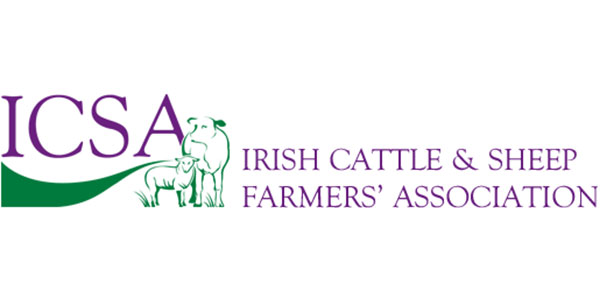
THAT’S FARMING – 13 OCTOBER 2016
“The ethos is about how do I explain to my customers where does my meat come from, so they can see who’s supplied it and trust in what they’re paying for. It’s also about making sure the farmers can feel secure in the deal, that we’re all happy to enter into a contract with each other and making sure no one gets fucked over.”
Fingal Ferguson is explaining the motivation behind the Piggy Co-Op. It’s one of the country’s few co-operative abattoirs, based in Cork. Following APB’s purchase of Slaney, some are wondering whether we should seek a major publicly run co-op abattoir. It’s certainly working out alright for Fingal.
He finds that the farmers he works with wish they could produce more, while he’d like to do twice as much. He explains the popularity as being down to the contract which guarantees he will take their produce. Customers, meanwhile, can go onto the co-op’s website and see via the calendar who is providing meat and when.
It’s a process that has allowed him to cultivate excellent relationships with the farmers, including from the small island of Cape Clear off the coast of southwest Cork.
“It has been an opportunity to meet some of the most interesting people. The system itself is based on where we can take the local price, and on top of that we put in a bonus, like €1 a kilo depending on how they’re reared,” says Fingal.
For farmers to go into a deal with the Piggy Co-Op, they must first meet “strict standards of animal husbandry before becoming an approved supplier, the pigs must be antibiotic free and have warm dry bedding in straw pens, and all the correct paperwork and traceability records must be in order”.
Piggy Co-Op operates on a small basis though. Fingal estimates he has about eight suppliers who provide him with 16 to 18 pigs per week. Of those eight, half are regulars while the other half are “hobbyists”. It is, as Fingal himself points out, “a drop in the ocean” in the business of meat.
There are several positives to a co-op system for slaughterhouses, which is what has farmers intrigued. An example often cited in studies on this is Denmark, where the co-ops are entirely publicly owned. They also operate on a one man, one vote basis, so that any stronger members can’t pull the rest in a direction they’re hesitant to go in.
What this means as well is that the meat is of a higher quality and the farmers can benefit from good prices, which comes across with the Piggy Co-Op.
The Danish model however takes place in a country where the government is expected to have a strong hand, unafraid to get involved in markets. This would be in marked contrast to Ireland.
Can Piggy Co-Op be replicated across Ireland? As the Irish Cattle and Sheep Farmers’ Association’s Edmund Phelan notes, decades ago many butchers had their own abattoirs. He believes that his native Waterford alone once had over 40 of them.
So what happened?
“Well, the dairy co-ops have worked remarkably well, the mart co-ops have worked well. But the Cork co-op in the 1970s was a flop. They failed to make funds out of the venture,” he explains.
Ireland joining the European Economic Community (EEC) was a big part of this. The benefits of membership to agriculture as a whole are well known, but it also had the effect of turning it into a big business game.
Edmund mentions he considered trying to submit a bid to take over Slaney Foods instead of APB, but he couldn’t get the capital together for the move. “Quality costs money,” he later says.
He also notes that one of the main barriers to cooperatives right now are the main players already in the market.
“The Big Three, APB, Dawn and Kepak, have such a hold in the market that it makes it very hard. They especially have control in slaughter and in rendering, making it harder for the individual to get into it.
“The Big Three are ruthless in the managing of their business, and know how to be as efficient as possible.”
Ray Doyle from the Irish Co-operative Organisation Society worries too that the Big Three will snuff the competition out while they are still in their infancy.
“They would squash a newcomer like a public co-op. They would think they can price them out it and put them out of business, and the main players would take the short term hit for a year to make that happen.
“Now if a co-op is to be started up, it should start with a co-op forming a pool of capital to buy out an existing player, as you need a route to market. You need those trade links early on to have any hope of surviving.”
However, Ray holds that there is a major difference between the dairy co-ops and a major meat co-op. He says:
“So, most of the dairy products have a long shelf life. Whereas if you slaughter a meat product today, it has to go today. And a big company can make a decision today, it might not be entirely legal but it can be done.
“If you do that in a co-op you need a board with an agenda and minutes, and a decision will have to be arranged. It would be tricky to get that to work with a product like meat, something with such a short shelf life. You’d need someone with a lot of managerial experience.
“By the way, I use the word “legal” carefully there. If there’s a big buyer, a company can get him in with some inducements, whereas a board would struggle to stand by it.”
Edmund also feels the heavy regulations from the EEC contributed to the failure of Ireland’s co-op abattoirs, though he’s seen the other side of the wall on his travels. He remembers in particular coming across a butcher’s in Italy on a sweltering day, with the pigs hanging out in the heat and the butcher using his cleaver to swot flies.
Conversely, Ray believes those much tighter rules may allow a co-op ground to flourish nowadays.
“There is so much more transparency now, partly because of the traceability with meat. That helps keep down the skullduggery, so maybe now is the time for a cooperative in the sector,” he says.
There is a clear desire from both men for some sort of return to co-op slaughterhouses, though both admit it’ll be difficult. Edmund maintains it’s an issue where political will may be needed, as the pressure to gather capital to survive could be too much for farmers.
As he says himself, quality costs money.




